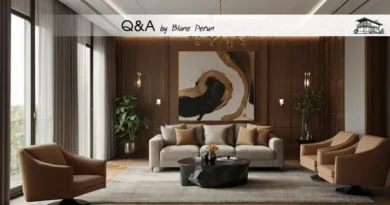What Is Unity In Interior Design
Crafting Harmony: The Essence of Unity in Interior Design
When we step into a well-designed space, there’s an immediate sense of comfort and belonging. This isn’t by accident; it’s the result of meticulous planning and design, central to which is the concept of unity. What is unity in interior design? It’s the invisible thread that weaves together various elements of a space, creating a harmonious and cohesive environment. Achieving unity is a subtle art that balances variety with consistency, ensuring that all components of a room complement each other to create a singular, unified aesthetic experience. This balance is crucial, not just for the visual appeal but for the functional aspects of living and working spaces as well.

Understanding the Framework of Unity
The Principles Behind Unity
At its core, unity in interior design revolves around the idea of creating a coherent space where every component feels like part of a larger whole. This involves the strategic use of colors, textures, and patterns that echo throughout the space, creating a rhythm that guides the eye smoothly from one area to another. The principles of design, such as balance, scale, and proportion, play pivotal roles in establishing unity, ensuring that each piece, regardless of its size or significance, contributes to the overall narrative of the space.
Harmonizing Elements and Space
Unity isn’t just about the pieces you choose; it’s about how those pieces interact with the space they occupy. Effective space planning and the thoughtful arrangement of furniture and decor can enhance the sense of unity. This involves considering the flow of movement within a space and how different zones communicate with each other. The aim is to create an environment where functionality and aesthetics are in perfect harmony, and the space feels intuitively right.
The Pillars of Cohesion
Color Schemes and Their Impact
Color is a powerful tool in the arsenal of an interior designer, capable of transforming spaces and evoking emotions. When it comes to unity, color schemes play a crucial role in tying different elements together. A well-chosen palette can serve as a consistent thread throughout a space, linking disparate elements and creating a cohesive look. Whether it’s a monochromatic scheme that relies on varying shades of a single color or a more complex arrangement that balances several hues, color schemes are fundamental to achieving unity in design.
Textures and Patterns: A Dance of Variety and Consistency
The interplay of textures and patterns adds depth and interest to interiors, preventing spaces from feeling flat or monotonous. The key to maintaining unity while incorporating diverse textures and patterns lies in finding a common element that ties them together. This could be a recurring motif, a shared color, or a thematic link that resonates throughout the space. The challenge is to introduce variety without disrupting the visual harmony, ensuring that every element feels like it belongs.
The Role of Lighting in Unifying Spaces
Ambient, Task, and Accent: Lighting Layers
Lighting is an often underestimated component of interior design that has a profound impact on unity. By strategically layering ambient, task, and accent lighting, designers can highlight the key features of a space while ensuring it remains functional and inviting. This layered approach not only enhances the aesthetic appeal of a space but also creates a sense of unity by drawing attention to the connections between different areas and elements.
The Influence of Natural Light
Natural light plays a pivotal role in creating unity in interior design. Its dynamic quality can transform the atmosphere of a space throughout the day, highlighting different aspects and bringing the interior to life. The thoughtful placement of windows, skylights, and reflective surfaces can maximize the use of natural light, enhancing the sense of unity by blurring the boundaries between the interior and the external environment.

FAQ: Unveiling Unity in Interior Design
How does unity in interior design affect the feel of a space?
Unity in interior design creates a seamless flow that makes a space feel harmonious and coherent. When every element, from furniture to finishes, works together, it produces an environment that’s aesthetically pleasing and comfortable. This sense of cohesion can make a room feel more welcoming and easier to navigate, enhancing the overall user experience.
What role does color play in achieving unity in interior design?
Color is crucial in establishing unity, acting as a visual connector between different elements within a space. A cohesive color scheme can unify disparate pieces, making them feel part of a collective whole. Whether through bold hues that add vibrancy or subtle tones that offer tranquility, color schemes are instrumental in weaving together the narrative of a space.
Can unity in interior design still allow for personal expression?
Absolutely! Unity isn’t about uniformity or sameness; it’s about creating a coherent backdrop that allows personal touches to shine. By establishing a unified foundation, individual elements, whether they’re eclectic artworks or heirloom pieces, can stand out without disrupting the harmony of the space. This balance between unity and individuality is what makes a space truly unique and reflective of its occupants.
How do textures and patterns contribute to unity?
Textures and patterns add depth and dimension to interiors, preventing them from feeling one-dimensional. When used thoughtfully, they can reinforce the sense of unity by introducing visual and tactile variety while maintaining a cohesive theme. The trick is to find a common thread—be it a color, material, or motif—that links these diverse elements together harmoniously.
What’s the impact of lighting on unity in interior design?
Lighting is a dynamic element that can dramatically influence the unity of a space. Through the strategic use of different lighting types, designers can create a layered effect that highlights the space’s best features while ensuring functionality. Proper lighting can draw attention to the connections between different areas, enhancing the sense of unity and making the space feel more integrated and whole.



